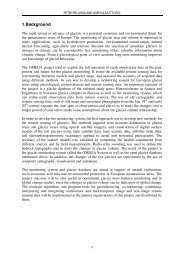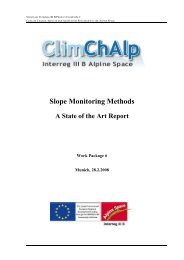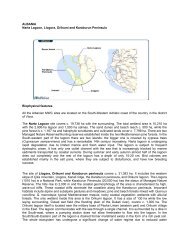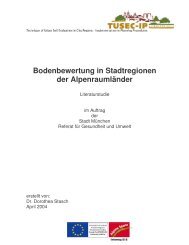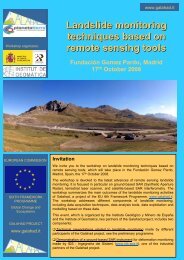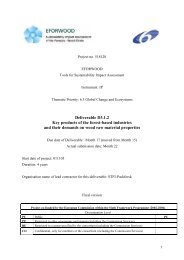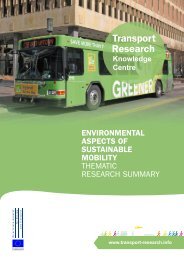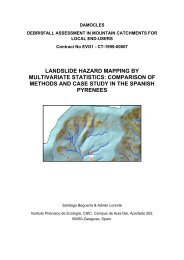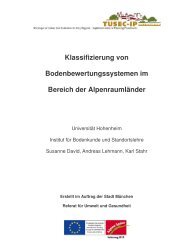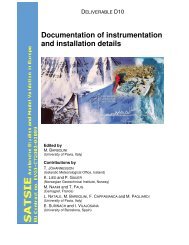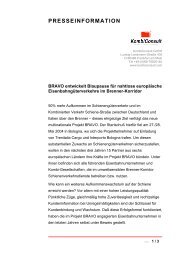Decision Support Tools - Thematic Research Summary - Transport ...
Decision Support Tools - Thematic Research Summary - Transport ...
Decision Support Tools - Thematic Research Summary - Transport ...
Create successful ePaper yourself
Turn your PDF publications into a flip-book with our unique Google optimized e-Paper software.
4.5.3 <strong>Research</strong> resultsThe benchmarking exercise has compared the transport systems of Mediterranean andEU cities which all share an interest from tourists, but may belong to two different political,social, cultural and religious contexts. The criteria for the selection of the cities have been:their location around the Mediterranean, that they have a population ranging between20,000 and 100,000 inhabitants, that they are actual or potential tourist destinations. Thetwo European cities (Orvieto in Italy - and Évora in Portugal), have been used as areference model to try to identify possible solutions to transport problems of the selectedMediterranean cities (Bethlehem in the Palestinian Authority, Jerash in Jordan andValletta in Malta). The use of Orvieto and Evora was motivated by their involvement inseveral European research projects, involving the testing and implementation of innovativetransport systems (funicular, escalators, electric buses), as well as the use of restrictionmeasures for private vehicles,15 indicators for describing the features of the cities’ transport system were identified anda questionnaire was created and circulated among the participating cities. Thequestionnaire consisted of five sections (General information, <strong>Transport</strong> modes, Socialimpacts, How the situation is perceived). Comparison of the five transport systemspermitted the identification of some differences between the EC and Mediterranean (MED)cities (EMERET, 2002):• the number of vehicles per head is much higher in the EC cities;• motorcycles and mopeds are practically absent in the MED cities;• in the MED cities, the number of taxis per 1,000 residents is higher than in the EUcities and shared taxis are widely used;• the length of the PT route per resident in the MED cities is much shorter than inthe EU cities;• the two Middle Eastern cities cannot provide local transport information on theWeb, although in Bethlehem transport information is available in many languages;• both MED and EU cities perceive air pollution and congestion as a seriousproblem;• noise and visual intrusion are perceived as serious problems in the MED cities;• in the MED cities trucks and vans are viewed as contributing significantly more tothe local air pollution than in the EU cities;• more accidents per 1,000 residents occur in the MED cities, with a much higherrate of injuries and deaths than in the EU cities.This benchmarking exercise has permitted the identification of areas of intervention toimprove efficiency and effectiveness of transport systems in the Mediterranean cities. One<strong>Thematic</strong> <strong>Research</strong> <strong>Summary</strong>: “<strong>Decision</strong> <strong>Support</strong> <strong>Tools</strong>” Page: 53 of 74<strong>Transport</strong> <strong>Research</strong> Knowledge Centre




